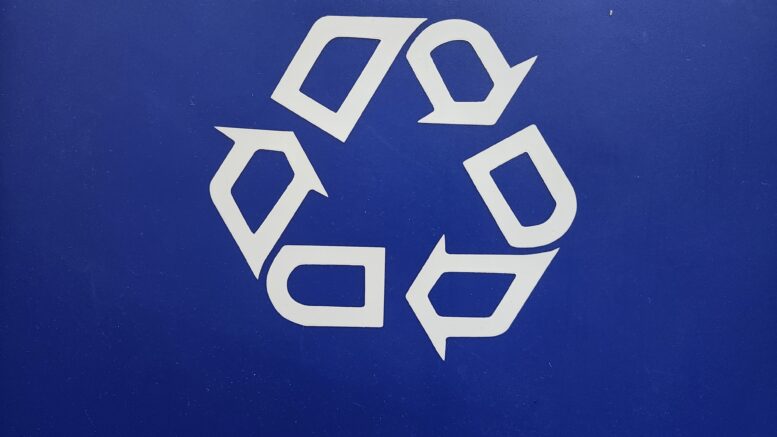Producers of material from plastic bottles to burlap coffee bags that package goods sold within the state of Colorado have just over nine months to offer their input on the fees that they should be charged to create a statewide residential recycling system.
The Joint Budget Committee gave final approval last week to the creation of an extended producer responsibility program that will fund a $310 million statewide system through costs assessed to consumer-goods makers who wrap products in any kind of material. The Circular Action Alliance — a nonprofit producer responsibility organization composed of the largest makers of canned, boxed and otherwise packaged goods — now has until Feb. 1 to submit to the state a plan for how those fees will be assessed and administered.
Development of such a plan is expected to attract a wide range of differing opinions about the applicability and even constitutionality of such a funding system, if the 2022 debate around the bill that created the EPR program is any indicator. While many environmental organizations and local-government leaders praised the April 17 program approval, the Colorado Consumer Coalition of businesses and trade groups criticized the “boondoggle” and vowed to serve as a watchdog during plan development.
How the statewide recycling program will come together
The first step, explained Colorado Circular Action Alliance program manager Peter Hargreave, is to determine which producers must pay the fee and then sign them up for the program. Alliance leaders will reach out to find those companies, but they also are asking producers to go to the alliance registration page and sign up themselves.
Affected firms are those that package their goods in plastic, glass, cardboard, paper, metal, wood and some textile packages, from coffee bags to the cloth sacks that hold jewelry, Hargreave explained in an interview. Any producer with less than $5 million in annual gross revenue is exempt, and in the case of franchising agreements it is the franchisor rather than the franchisee that must pay the new fees.

Peter Hargreave is the Colorado program manager for Circular Action Alliance.
After the breadth of participants is determined, alliance leaders must figure out how the fees will be assessed, a process that is likely to lead to some 80 different categories of fees due to differences in the weight of packaging material. In general, Hargreave noted, the fees will be based on the recyclability of the material — the more recyclable it is, the less the cost will be — and the ability of the material to reach end markets in Colorado.
Home collections and end markets
Right now, Colorado has only one true end market — a closed-loop recycling system in which materials collected in the state are broken down and then sold to companies that can use the recycled materials in their goods — and that is for glass. The biggest aims of the EPR system are to fund a collection system that diverts more recyclable materials away from landfills and to gather enough materials to attract businesses that can break down paper, cardboard or steel and businesses that can use them again.
“This is about trying to ensure there is an adequate recycling system to manage the amount of packaging within the marketplace,” Hargreave said.
Some packagers are excited about the program. Danone North America — a Broomfield headquartered food company whose brands include Dannon, Oikos and Horizon Organic — said in a statement that it’s committed to increasing recycling rates, which hover around 22% to 25% in Colorado.
“Colorado has the unique opportunity to dramatically improve recycling through a close collaboration with advocates, the state and packaging producers who will operate and pay for the system,” added Mary Marchun, executive director of the Colorado Beverage Association, whose members include The Coca-Cola Company and Keurig Dr. Pepper. “This unique and positive collaboration was why Colorado was able to agree on pioneering recycling policies and become the first state in the country with this model.”
Business coalition disappointed by decision

Recyclable items rest inside a recycling bin.
But while program proponents argue that the fees assessed to producers will be so small on a per-item basis that they will not affect pricing of the goods, the consumer coalition disagrees. The cost of the program, estimated to be as high as $310 million through 2035 in a report done for the state, will trickle down to consumers, and it will boost recycling only to 58% of potential goods, accounting for a fraction of materials going to landfills, it said.
“This program was developed to hit arbitrary recycling targets without considering operational realities,” coalition executive director Jaime Gardner said a statement to The Sum & Substance. “We’re disappointed that the Joint Budget Committee did not see the obscene costs to this meager return as prohibitory to this program moving forward.”
In addition to determining appropriate fees, alliance leader must figure out how to procure services from refuse and recycling collectors across the state, offer equitable service even to rural areas and create a way to get recycled materials to end markets. The program is expected to launch as soon as 2026.
What’s next for recycling program
Hargreave said that he will seek input from all affected producers about what they feel the appropriate fees will be — even to the point that the alliance creates different fees for different varieties of the same material. For example, he expects that fees on waxed cardboard likely will be higher than on standard cardboard because waxed cardboard is more difficult to recycle and is less likely to find markets willing to reuse it, he said.
The statewide residential recycling system — one that a report determined will allow for weekly curbside pickup along the Front Range and biweekly service in areas further from collection centers — is not the only aim of the fee-setting process, Hargreave added. He believes that the EPR program and its fees will send a signal to the marketplace that packaging companies will benefit financially from using more recyclable materials, and that will lead to a boost in those materials that will in turn create closed-loop markets.
“This is a step right now towards implementation,” Hargreave said. “We certainly don’t have all of the answers now. We will be doing a fair amount of consultation with the business community.”
